
People Management in SAFe©
Transforming the people management function will profoundly benefit your people, significantly impact your value streams, and ultimately enhance your Scaled Agile transformation.
The Scaled Agile Framework (SAFe) now incorporates the JLS approach to Transforming People Development as an extended competency, and it can be accessed through SAFe Studio.
Ultimately, people management emerges as key differentiator for organizations seeking a competitive edge, especially within SAFe© transformations.
The Scaled Agile Framework (SAFe©) excels at organizing around value and ensuring high value delivery with customer-centricity on a large scale. The companies leveraging SAFe are typically large organizations, oftentimes with a proud tradition and strong leadership, whereby SAFe is only one of two or more operating systems. Combining the needs of the agile, network structure with the established organizational setup with its leadership paradigms and processes is a fine balancing act. A balancing act, that is – at the end of the day – decided by your approach to leadership and culture, culminating in the way you run people management.
This makes people management the linchpin for a successful dual operating system. And while SAFe provides guidance on the dual operating system, it does not clearly define the approach to and setup of people management and instead leaves it up to the organization to figure out where to put that lever and define the interfaces.
Therefore, we provide here a clear guideline on how to transform People Management to hybrid organizations who want to take their SAFe implementation to the next level.
We will introduce you to the crucial role of the People Developer and enrich your knowledge of people management in a SAFe setting. You will explore why it is important, what it entails, and how it connects to the rest of the organization.
In this article you can explore:
- The Importance of Transforming People Management
- Rethinking People Management in SAFe
- The People Developer Role: Building the People Runway
- Steps to Transform Your People Management Approach
- Positive Impacts of Transforming People Management
- What Makes JLS A Unique Partner?
- Our Service Packages
- Further Reading & Resources
- Contact
The Importance of Transforming People Management
Transforming People Management is important on two levels. One: ‘People, purpose, and culture’ is THE conversation of the next decade, putting people management at the top of every leadership agenda. And two: No matter how successful your SAFe transformation and operations, if the people processes are misaligned you will not get the highest possible return on investment – or worse, it might even derail your trains.
People & Culture is the Key Differentiator in the Age of AI
The world is changing faster than ever, forcing us to rethink the very meaning of work, and the type of work people do. And while we get excited about the potential of AI, we overlook the fact that technology is humanizing work. In other words: Not in spite, but because of fast technological advances, it is the human element that will drive future business success. We can only get there if we successfully rethink how we engage with people and transform our people management approach. High employee engagement has long been proven to lead to higher productivity, performance, and profit; and coupled it with a continuous learning culture will improve innovation power, adaptability, change readiness, and resilience. And this will only become more important going forward.
People Management can Elevate (or Undermine) your SAFe Operations
SAFe can unleash its full potential if all pieces are in place. Many SAFe transformations begin from within a development value stream. When this happens, and other parts of the organization have not been involved in developing the Agile Release Trains (ARTs), it’s essential to create a more comprehensive connection across the organization. This connection should include departments such as Finance, Legal, and People & Culture, as strengthening these links is necessary to advance the lean-agile transformation to the next level. How these interfaces and interactions with the rest of the organization that will determine the ultimate success of your SAFe transformation journey and continued success of your (Solution) ARTs.
Rethinking People Management in SAFe
How you and your organization perceive and perform the people management capability is a differentiating factor going forward.
Rethinking People Management Processes
Especially traditional and ‘fake agile’ HR processes are particularly harmful to your efforts and successes in the SAFe operations. A prime example that you may have come across too, is individual goals and incentives that go against collaborative value creation and discourage experimentation and innovation. Another one might be your performance management system, that is either still traditional or is run more frequently to simulate agility, but at the end of the day, you are investing time, money, and energy into a process that was initially set up to align, communicate, and rally behind goals and ensure high value contributions, something that SAFe already excels at.
You can certainly think of many more examples that illustrate the disconnect between agile ways of working and traditional people management. But we would be remiss to blame everything on corporate HR processes. While they need an overhaul here (and we will tell you what your contribution is shortly), there is also the leadership component to people management to consider.
Reexamining Reporting Lines & Managerial Setup
When you think back to the beginnings of your organization’s SAFe journey. You probably started with a virtual organization, which is a great thing to do. Your people started working in the network organization from day one without you having to alter the original reporting lines in your people management systems like SAP, PeopleSoft, or WorkDay. Now, this probably worked well at the beginning. Where it gets sticky is when it is no longer a means to an end (employees are allocated to one person in the system) but becomes a burden.
The original manager is still responsible for traditional people tasks from running though the annual performance management process, doing employee appraisals and distributing salary increases. Leading them to summon their direct reports to staff meetings and weekly 1:1s to discuss work and delivery topics that are already taken care of within their agile team or ART – wasting time and energy in the process.
It may feel like artificially keeping alive an outdated managerial structure, while being removed from the day-to-day planning and operations and yet fulfilling the vital role of people management. How often do you hear complaints about agile increasing the number of meetings? The problem is not that SAFe reconfigures how, when, and why people get together, the problem is that, that many or all of the original meetings are kept on the books.
These questions fall under two categories: ‘who’ and ‘how’. Let’s look at the ‘who’ first.

Your organization may have solved the challenge of separating the different leadership responsibilities, while others are still trying to figure out how to satisfactorily redefine reporting lines and managerial structures in hybrid organizations.
They may ask practical questions like:
- What are the new reporting lines?
- Who is responsible for people matters like talent scouting, learning and growth, and performance acceleration?
- What is included in people management that is not covered through SAFe roles and ceremonies?
But also strategic ones:
- What does shared leadership entail?
- How do we remove individual performance management since we have SAFe that is perfectly set up for goal clarity, focus, alignment, value delivery, and continuous improvement? How do we deal with individual performance appraisals and incentives in a dynamic and collaborative value creation setup?
- How do we build a workforce that is resilient and change-ready?
- How do we create a learning organization under the pressure of efficiency and high pace value creation?
The Solution: The People Developer.
How advanced is your Agile People Management?
Answer 10 short questions to find out how well you are progressing.
The People Developer Role: Building the People Runway
People management has traditionally been part of the responsibility of line managers, the group of leaders responsible for content, design, process, and people topics.
This was oftentimes a challenging balancing act. You may have experienced yourself, how difficult it can be to get people topics like learning sessions on the team backlog, since people topics are oftentimes not seen as important or urgent enough to win out over a delivery responsibility.
And while the consolidation of power with to one managerial role was a successful model in the past, it is no longer a recipe for success in the age of fast changes. Agility, that thrives on creating and managing change, and diverse views and perspectives are needed to ensure learning and speed.
Therefore, SAFe gives us a leadership team consisting of the different authorities of the ART, who act as experts and advocates for their area of responsibility.
Product and Solution Management for content, System and Solution architect/engineering for design, and RTE/STE for flow and relentless improvement. This leaves the people topics and the core question of: Who has people as their first priority? Enter the role of the People Developer, who serves as the people authority on the ART. Together they form the Tactical Square (or Triad).
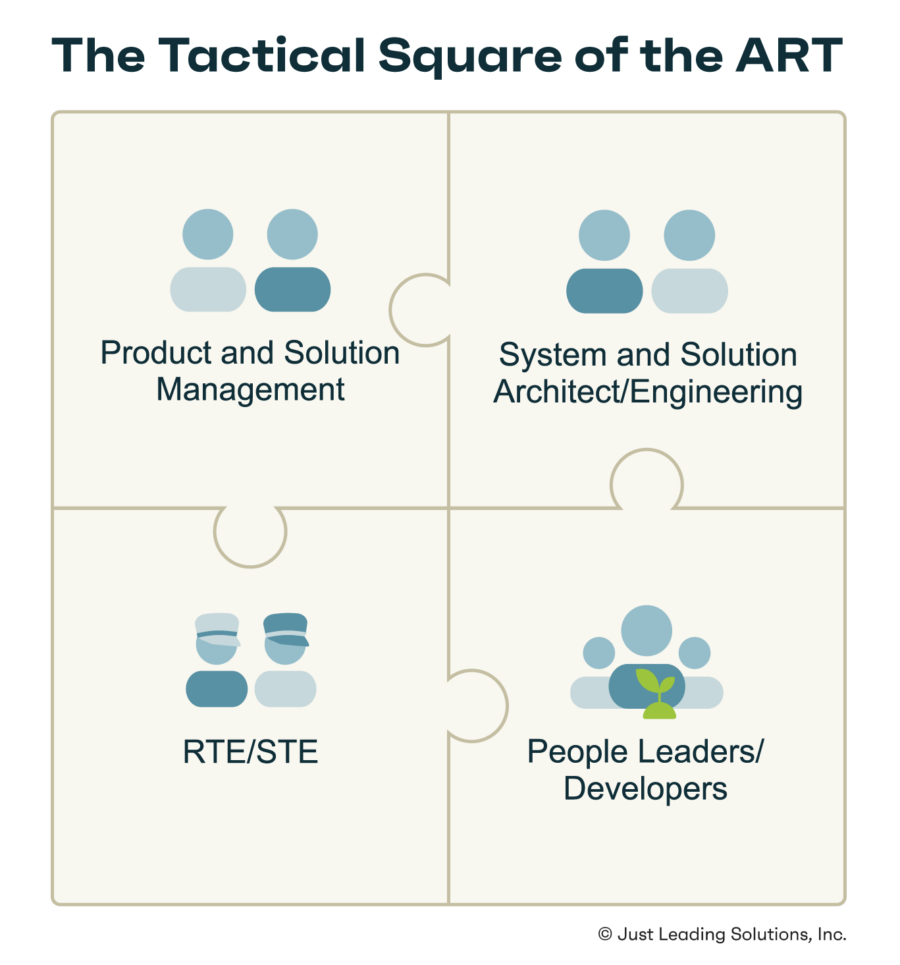
As a strategic partner within the Tactical Square, however, you provide expertise and advocacy and drive organizational success by building a robust talent pipeline through:
- Engaging in Talent Enablement
- Cultivating Performance Acceleration
- Conducting strategic Workforce Management
- Spearheading people matters
- Acting as People Advocate and Culture Champion
- Driving Resilience & Change Readiness
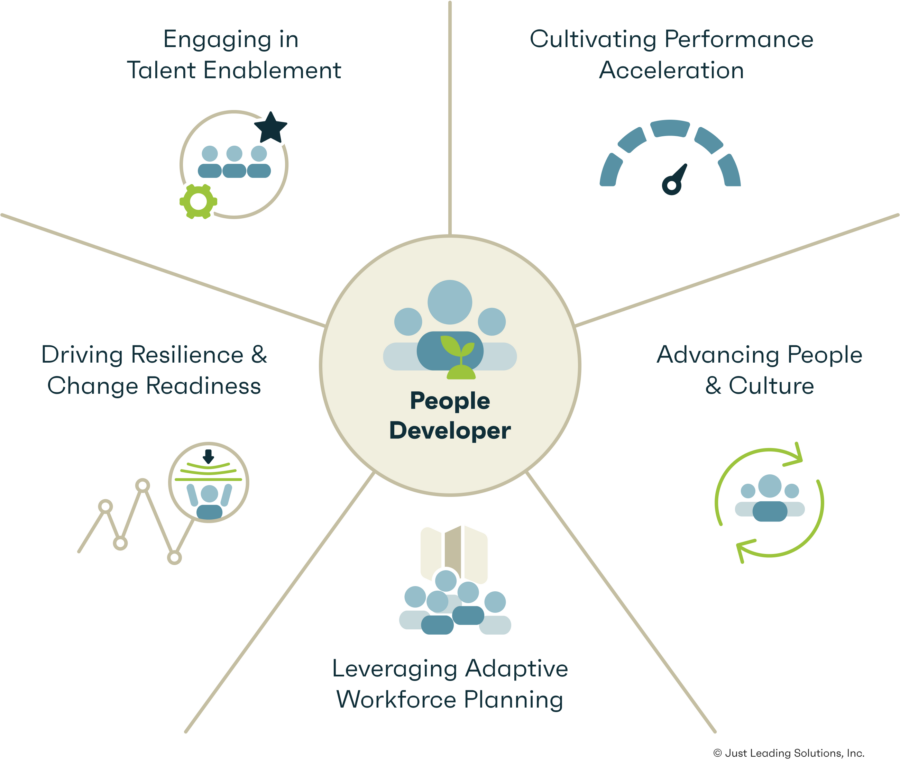
As outlined before, the new reporting structure shifts away from functional clusters and previous reporting lines, instead focusing on assigning People Developers to specific agile teams within a single ART. Each People Developer will be responsible for approximately 25-30 individuals, encompassing three to five agile teams. This focused approach aims to enhance your ability to build deeper relationships, understand team dynamics, and provide personalized guidance. By assigning entire teams within the same ART, the structure facilitates direct observation of team dynamics and enables effective translation of ART needs into strategic workforce planning, ultimately empowering People Developers to excel in their roles.

As a People Developer, you are a leader and champion for people, dedicated to fostering a culture of collaboration, learning, and adaptability. You act as a talent enabler, employee advocate, culture champion, and strategic partner. You may be called a People Manager or Agile People Leader, but at the end of the day you are not there to manage people. Instead, you have the critical task to help the people under your care reach their full potential, ensuring they are resilient and change-ready and well-equipped to navigate the challenges of a dynamic environment.

Discover the World of the People Developer
Further explore the role, impact, and essential resources.
Steps to Transform Your People Management Approach
Rethinking your people management approach is not a small endeavor. But as the saying goes: A journey of a thousand miles begins with a single step.
If you are part of an organization that has already successfully implemented SAFe, but are struggling with the hybrid organization setup when it comes to people management, or you have a setup in place, but are interested in taking it to the next level, here are a few steps you may want to take:
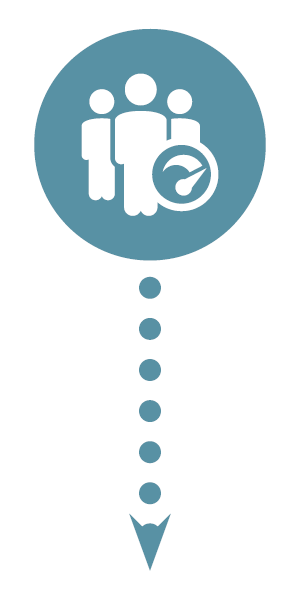
Analyze Current People Management
Begin by conducting a critical and honest assessment of your current people management setup and practices. Specifically, you must pinpoint where traditional leadership models and HR practices clash with the principles of shared leadership and contemporary People & Culture themes inherent in SAFe. Pay particular attention to the interface between your hierarchical and network organizational structures, as this is often a source of friction. Scrutinize your people management systems, reporting lines, and the distribution of leadership responsibilities. This in-depth analysis will reveal the precise areas needing transformation.
If you’re unsure where to begin, leverage a tool like the ‘People Management Quick Check’ to gauge the necessity for a more comprehensive review. This initial diagnostic will provide a focused starting point for your improvement efforts.

Design Leadership Structure
Redesign the leadership structure to effectively integrate the People Developer role as people authority on the ART and further promote shared leadership. This is done by building a strong collaborative ART leadership team (Tactical Square or Triad) consisting of Product and Solution Management focusing on content, System and Solution architect/engineering on design, RTE/STE on flow and relentless improvement, and People Development on people.
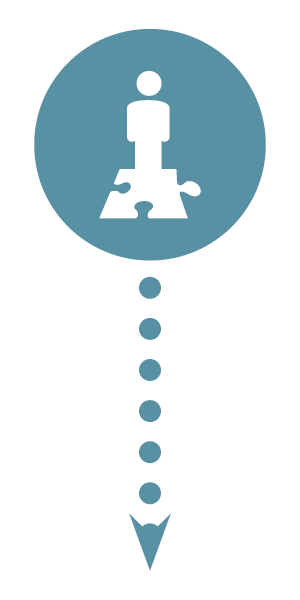
Define People Developer Role
Clearly define the responsibilities and expectations of the People Developer role. This includes outlining their role as people runway builder, talent enabler, employee advocate, culture champion, strategic partner, and member of the Tactical Square. Determine the necessary competencies and qualities for this role. Establish clear metrics for measuring the People Developer’s success and impact on employee engagement and organizational performance.

Select and Onboard People Developers
The role of the People Developer is a challenging one to staff. On the one hand, they are people champions excellent at spotting the diamond in the rough and guiding people. On the other hand, they need to be systems thinkers able to take strategic initiatives and translate them into winning talent strategies while collaborating to redesign and advance People & Culture processes. Carefully select individuals who possess the necessary skills, experience, and mindset to excel in the People Developer role. You are looking for people who are championing others, not putting themselves first. Hence, the conscious decision to use the label ‘People Developer’ and not ‘People Manager’ or ‘People Leader’. Once you have selected the right candidates, run a comprehensive onboarding program that familiarizes them with their roles and responsibilities as well as organizational specifics. Provide ongoing learning and growth opportunities and coaching.

Assign Teams
You assign teams to each People Developer. Aim for a ratio of approximately 25-30 individuals per People Developer, which is three to five agile teams. All teams, and with that all people under care, are on a single ART. This focused approach allows your People Developers to cultivate deeper relationships, understand the specific dynamics and demands of each team, and provide more targeted guidance and support. Avoid the pitfall of replicating previous reporting lines or assigning People Developers based on functional clusters, as it will significantly hinder the ability of your People Developers to observe team dynamics, provide personalized guidance, and effectively translate ART needs into strategic workforce planning. Instead, assign entire teams within the same ART, which will ultimately empower your People Developers to be more effective and successful in their critical role.
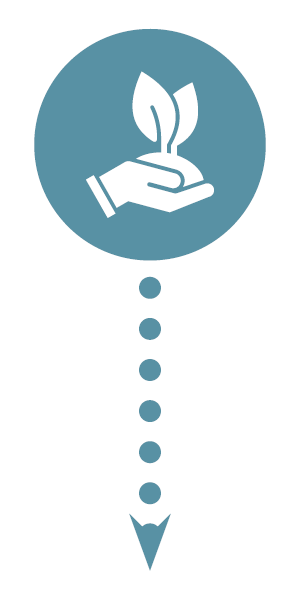
Execute Operational Excellence (run the business)
People Developers ensure talent enablement operates seamlessly. At the individual level, this means facilitating learning and growth dialogues, maintaining talent cards and growth profiles, and coordinating exploratory assignments. They provide active guidance and support to each person under their care. At the ART and cross-ART level, they engage in talent mapping, talent pool dialogues, capacity allocation, and adaptive workforce planning. Critically, they prioritize systems thinking over local optimization to ensure holistic talent management.

Collaborate on Strategic Initiatives (change the business)
People Developers also actively participate in strategic initiatives aimed at building a robust people runway and organizational effectiveness. This includes collaborating on overhauling traditional or ‘in-name-only-agile’ practices such as Performance Management, redefining interfaces to corporate HR processes through transitional solutions, and introducing new ceremonies and artifacts to advance people & culture and ensure the effectiveness of People Management.
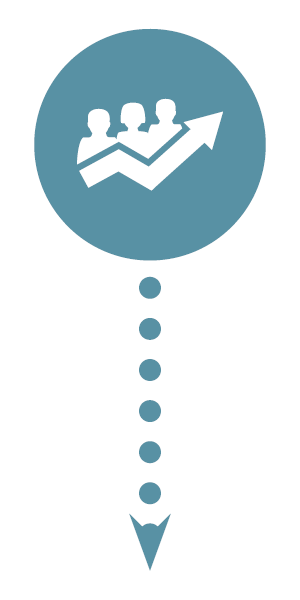
Continuously Improve
Establish a feedback loop to continuously evaluate and improve the effectiveness of the new people management setup. Regularly gather feedback to identify areas for improvement. Use data and analytics to track key metrics like eNPS and people developer impact scores. Encourage a culture of experimentation and learning not just with your employees, but with your People Developers, too.
As A Sole Practitioner: You may not be in a position to overhaul your entire approach to people management. If so, you may want to consider these options.
(click on arrow to view options)
- Further explore key topics like Talent Enablement, Performance Acceleration, and Adaptive Workforce Planning, Change Enablement, and Talent Scouting
- Attend specialized training
- Engage with other People Developers
- Experiment with tools like growth profiles, exploratory assignments, team value propositions, talent pool mapping, capacity allocation etc.
- And socialize a more formalized setup
By taking these steps, your organization can effectively apply People Management and create a workplace where employees thrive, and the organization achieves its strategic goals.
People Development is not a one-time event, but an ongoing journey of adaptation and improvement, requiring commitment and collaboration from all levels of the organization. And while it is a long journey, it is a worthwhile opportunity to elevate the human factor to continued organizational success.

Positive Impacts of Transforming People Management
Once you have successfully transformed people management within your organization, the positive impacts will be felt at every level.
- At the (Solution) ART level, you’ll witness the elevation of the tactical square, with people aspects finally being given the weight they deserve in decision-making. This leads to better, more well-rounded strategies, fueled by insights into your people runway and a more effective capacity allocation to people enablers. Employee engagement will also see a significant boost, alongside a stronger growth mindset permeating throughout the ART.
- From a People perspective, individuals will experience a greater sense of support and psychological safety, fostering an environment where they feel comfortable taking risks and contributing their best. Growth opportunities will become more visible and accessible, empowering employees to take ownership of their own learning and growth journey.
- People Developers will begin to see the interconnectedness of people management, realizing how it forms the foundation of a strong value stream. They’ll grasp how talent enablement and scouting work together to accelerate talent acquisition, and how effective talent enablement, combined with successful SAFe operations, can streamline or even eliminate the need for traditional performance management systems.
Overall, the transformation of people management will have a profound impact on the success of your value stream. By building a strong people runway and nurturing a resilient and adaptive talent pool, the organization will be better equipped to achieve its strategic objectives. This transformation champions the learning and growth of individuals, ensuring that the ART/Value Stream possesses the necessary adaptive talent and transferable capabilities to thrive in a dynamic business environment. Ultimately, this fosters a culture of learning, adaptability, and collaboration, driving the company towards greater success.
People Development is one of the most influential factors in taking your SAFe operations to the next level. Taking on this vital piece is nothing for the faint-hearted and requires courage and passion, but above all an in-depth understanding of the role and the intricate nuances between people management and people development. This forms the bedrock of successfully transforming people management and ensuring that this transition goes beyond a relabel to truly tackling the last bastion of hierarchical structure and managerial thinking.
Ready to dive deeper?
Explore further reading and resources.
Our Service Packages

Live Webinar Series
Live Webinar: The Emerging Role of the People Developer (Agile People Leader)
To what extent has your people management evolved? This live webinar explores the fast-emerging role of the People Developer, a new breed of dynamic and influential leaders who bring a holistic approach to people leadership. We will cover the backstory, explore the responsibilities, and share why this role is crucial to the success of modern organizations.
Next Live Webinar: July 10, 2025

Audits & Assessments
People Management Audit Workshop (3 Hours)
Uncover the strengths and weaknesses of your current People Management setup and receive expert guidance on transitioning to a more aligned approach in a 3-hour workshop.

JLS Academy
Certified Masterclass for Agile People Leaders Program
Join our Masterclass for Agile People Leaders! The 4-6 weeks multi-phase certification program provides a deep dive into the impact of People Development in organizations with large scale agile operations. Explore how to leverage your existing Agile knowledge to implement contemporary People Leadership and Talent Management strategies.

Consulting Services
Redesign Your People Management (6-12 Months)
Partner with us to design and launch a new People Management setup, including establishing the role of the People Developer, enhancing your ART leadership team through the Tactical Square, and assigning the people under care.
What Makes JLS A Unique Partner?
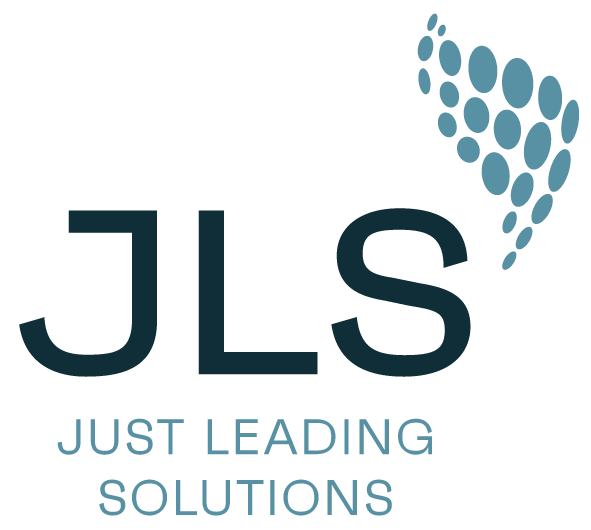
We understand Organizational Design, People & Culture, and Advanced Agility
We live and breathe Agile, but we are pragmatists not evangelists
We can help you advance your People Management regardless your starting point
